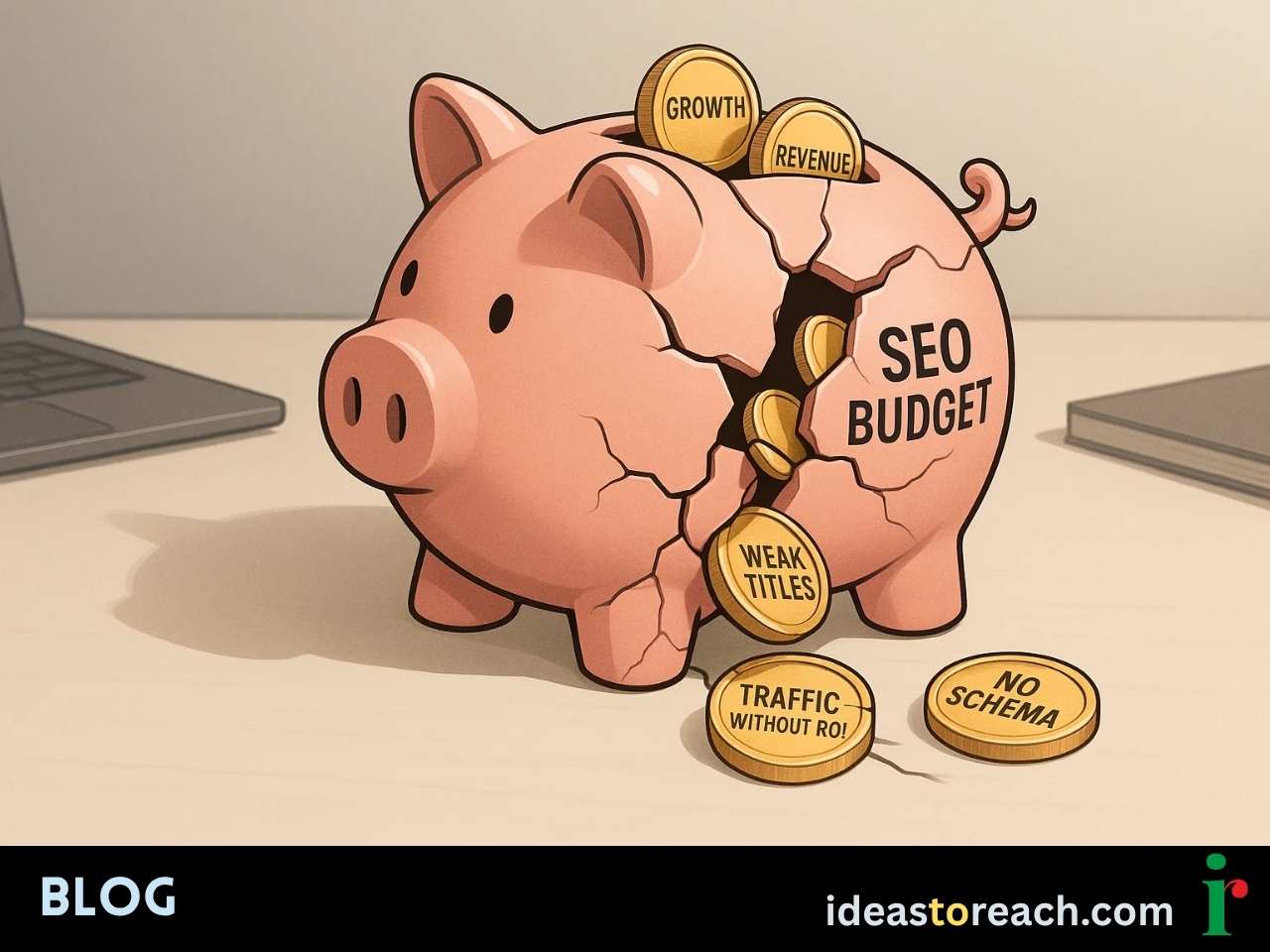
SEO is often seen as a box to tick: publish blogs, add keywords, build some links, and wait for traffic. But here’s the hard truth, rankings alone don’t grow your business.
The real purpose of SEO is to bring you customers, reduce your reliance on paid ads, and compound your growth over time. Yet, most companies unknowingly burn money on SEO. Why? Because they make the same avoidable mistakes that silently drain ROI.
Consider this: Ahrefs found that 96% of web pages get zero organic traffic. That’s not just wasted content, that’s wasted budget, wasted time, and wasted opportunity.
Worse, even the pages that do rank often fail to convert because they’re too slow, too generic, or misaligned with what buyers actually want.
In this blog, we’re breaking down the biggest SEO mistakes that cost you revenue, with the evidence behind them and the fixes you need to consider.
The problem: Ranking for a keyword doesn’t guarantee results if the content doesn’t match what the searcher actually wants.
For example, someone searching “best CRM for small business” is likely looking for a comparison or list, not a pushy product page. If your page doesn’t deliver what they expect, they’ll bounce and click a competitor instead.
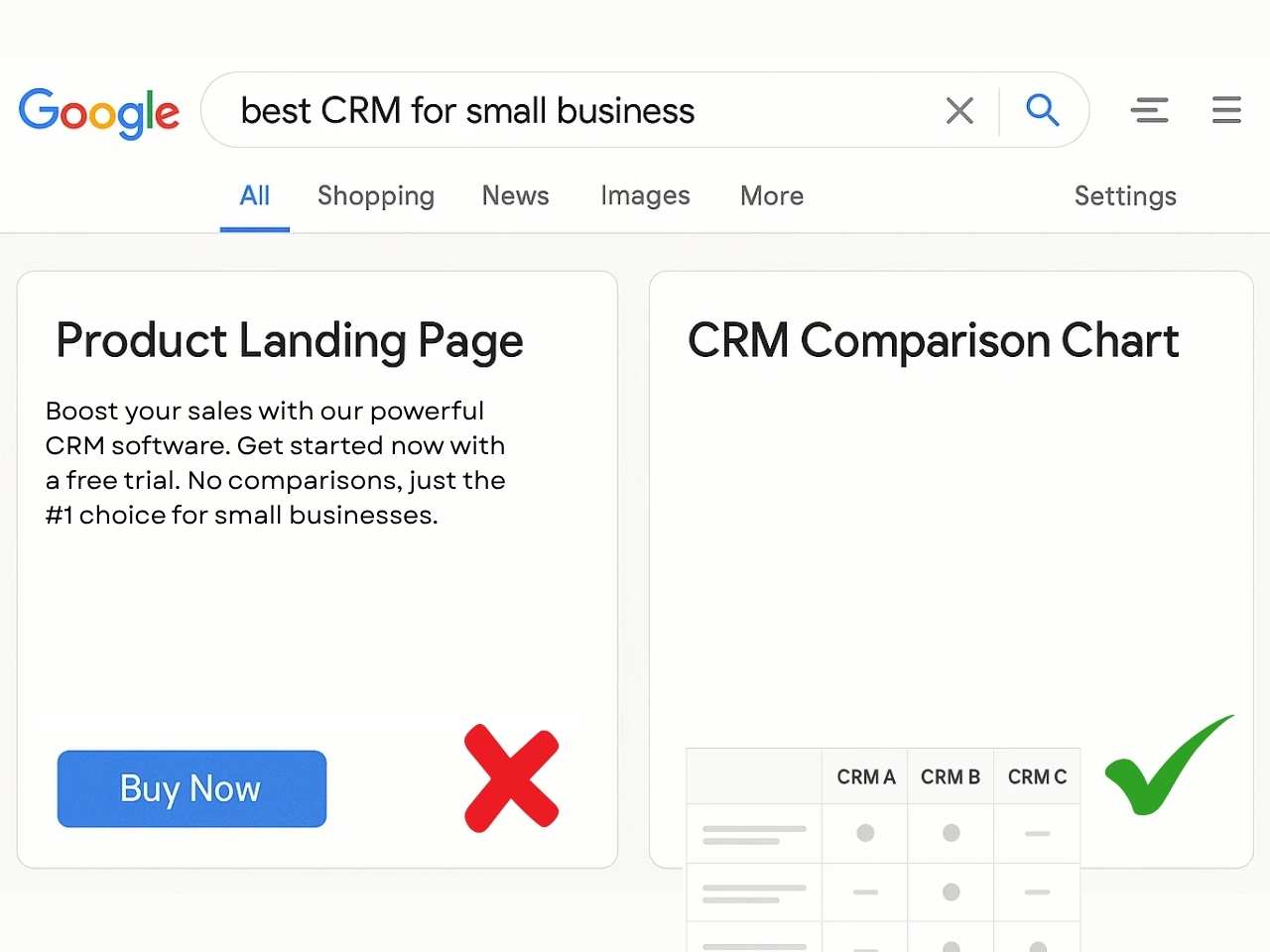
Why it’s costly: The #1 organic result gets close to 40% of clicks, but if your content doesn’t match intent, CTR plummets and those clicks go to competitors. That means your investment in ranking is effectively funding someone else’s sales funnel.
The solution: Every keyword should be tied to the stage of the funnel (awareness, comparison, or decision) and the right content type (guide, review, product page). Matching intent also strengthens EEAT in SEO, since Google rewards content that not only targets the right query but also demonstrates expertise and trustworthiness.
The problem: Many businesses publish blogs just to “keep the site active.” One week it’s about a festival, the next week about industry trends. On paper, it feels like content marketing. In reality, it's a scattered effort.
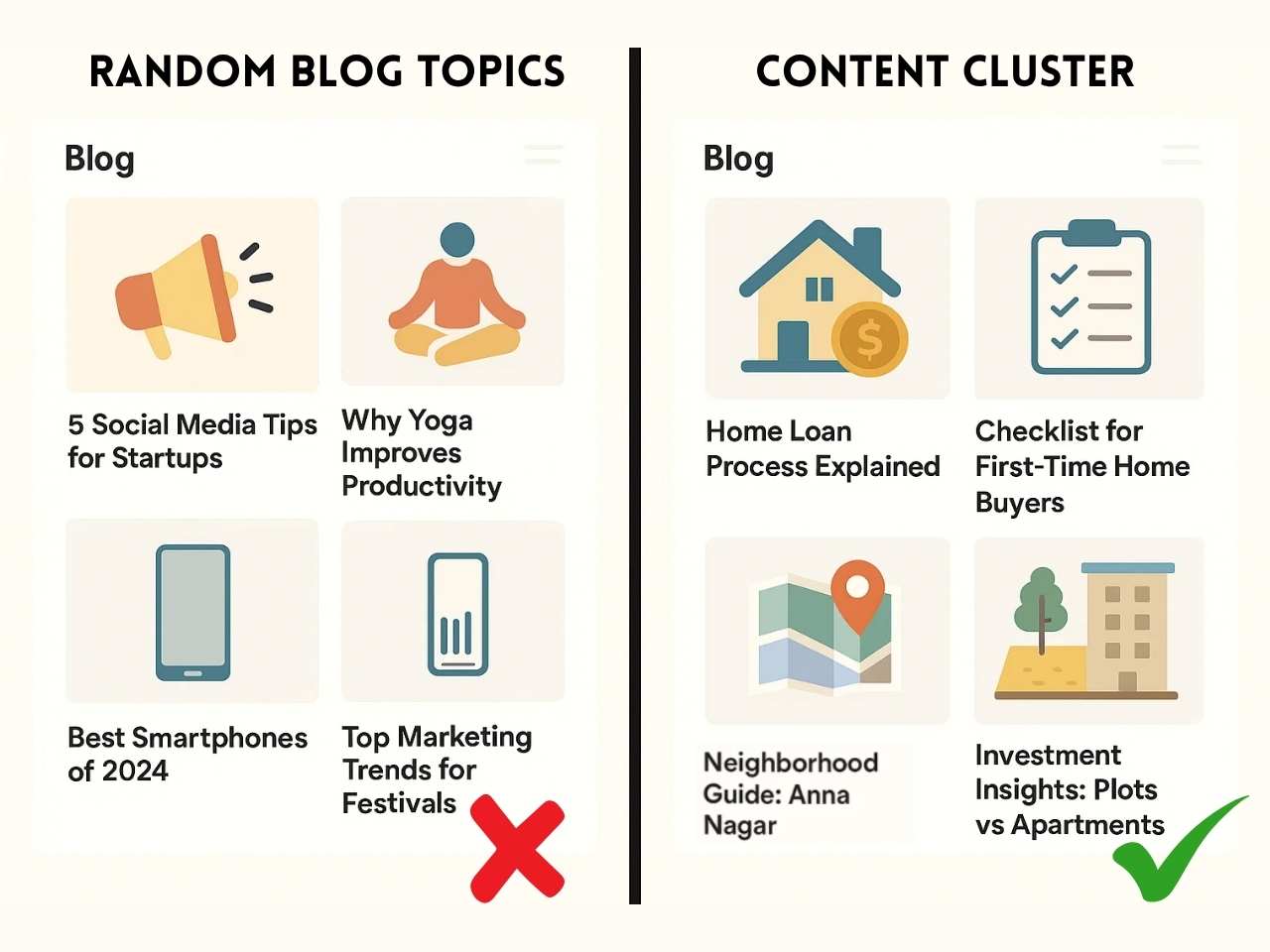
Why it’s costly: The vast majority of content online never gets seen. Industry studies show nearly all pages attract no organic traffic. A key reason? They’re written in isolation, without being tied to a broader theme.
Search engines don’t just reward individual articles, they reward websites that show depth in a subject. If your site jumps from topic to topic, Google can’t understand what you’re an expert in, so it doesn’t trust you to rank.
The solution: Instead of chasing random ideas, build depth around the topics your customers care about. For example, if you’re in real estate, that could mean covering: home loan processes, buyer checklists, neighborhood guides, and property investment insights.
The problem: Your website looks fine on a desktop in the office but takes too long on a mobile network. By the time the page loads, the user has already bounced.
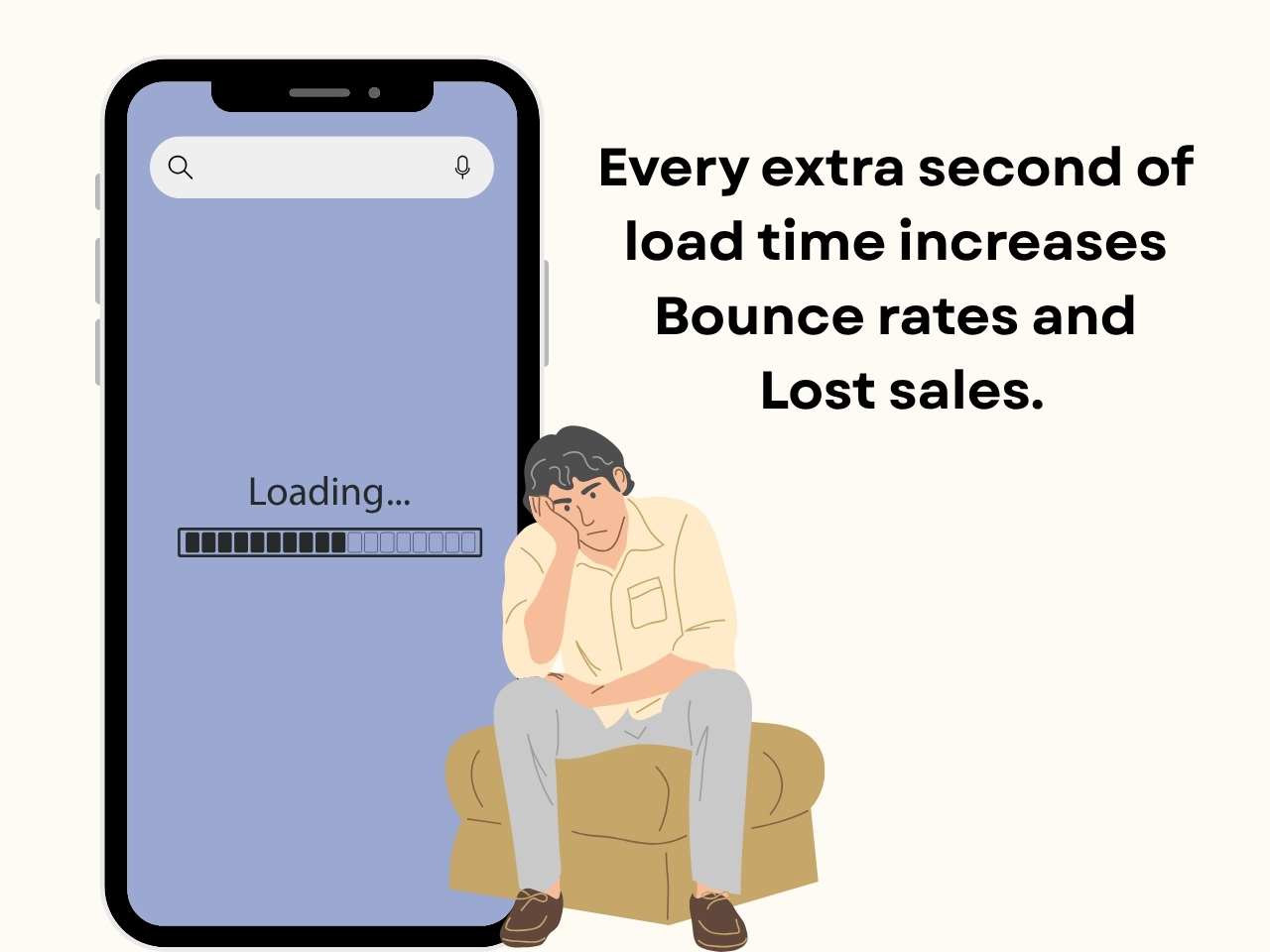
Why it’s costly: Google reports that when load time goes from 1 second to 3 seconds, bounce probability increases by 32%. By 10 seconds, the bounce rate can more than double.
That’s not just lost traffic, that’s lost sales.
The solution: Site performance isn’t a “tech detail.” It’s revenue protection. Every business should treat Core Web Vitals as seriously as checkout uptime. Metrics like Largest Contentful Paint (LCP) are direct ranking signals, and poor implementation of techniques like lazy loading can actually make performance worse instead of better.
The problem: A lot of businesses publish content that’s so generic it could sit on any competitor’s website.
It usually sounds like a reworded version of what’s already ranking: no new data, no examples, no proof, and no author credibility. This kind of content doesn’t answer the reader’s real questions, it just fills space.
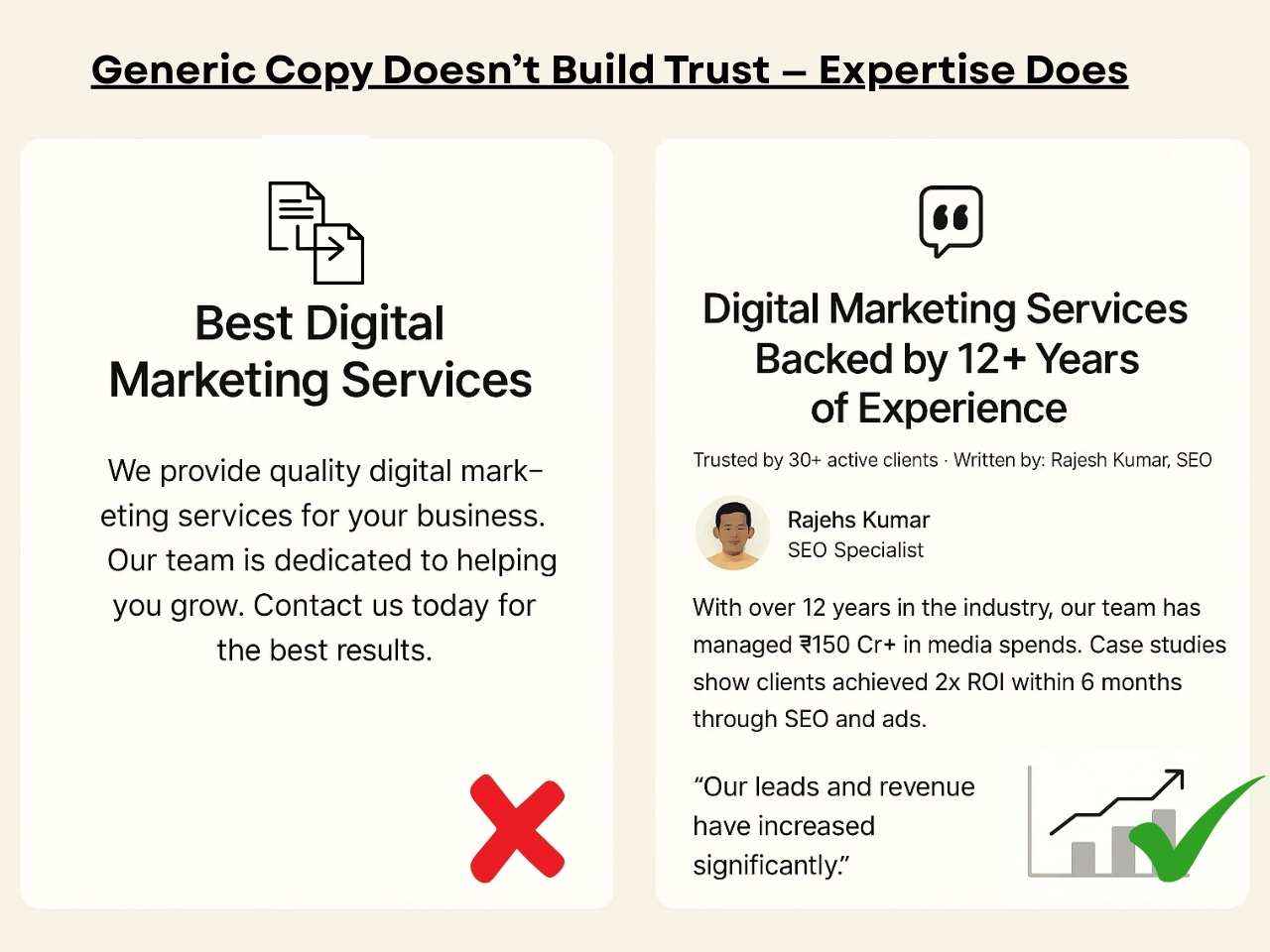
Why it’s costly: Google’s Helpful Content Update rewards originality, not filler. Your content should fill, not kill, otherwise you risk being ignored. In 2024, the Helpful Content Update became part of Google’s core ranking systems, which means low-value content is actively demoted. Beyond rankings, there’s also the customer perspective: if your blog feels like it was written just to tick an SEO box, readers won’t trust your brand.
The solution: Content needs to demonstrate real expertise and originality. That doesn’t mean long essays stuffed with keywords, it means showing why your perspective is worth listening to.
When content carries Experience, Expertise, Authority, and Trust (EEAT), it doesn’t just rank better, it convinces readers they’ve found the right solution in your business.
The problem: You may be ranking in search results, but if your title and meta description are weak, users will scroll past your link.
Generic titles like “Best Digital Marketing Services” or “Top 10 SEO Tips” blend in with every other result. They don’t tell the searcher why your page is different, so even though you’ve earned the impression, you’ve lost the click.
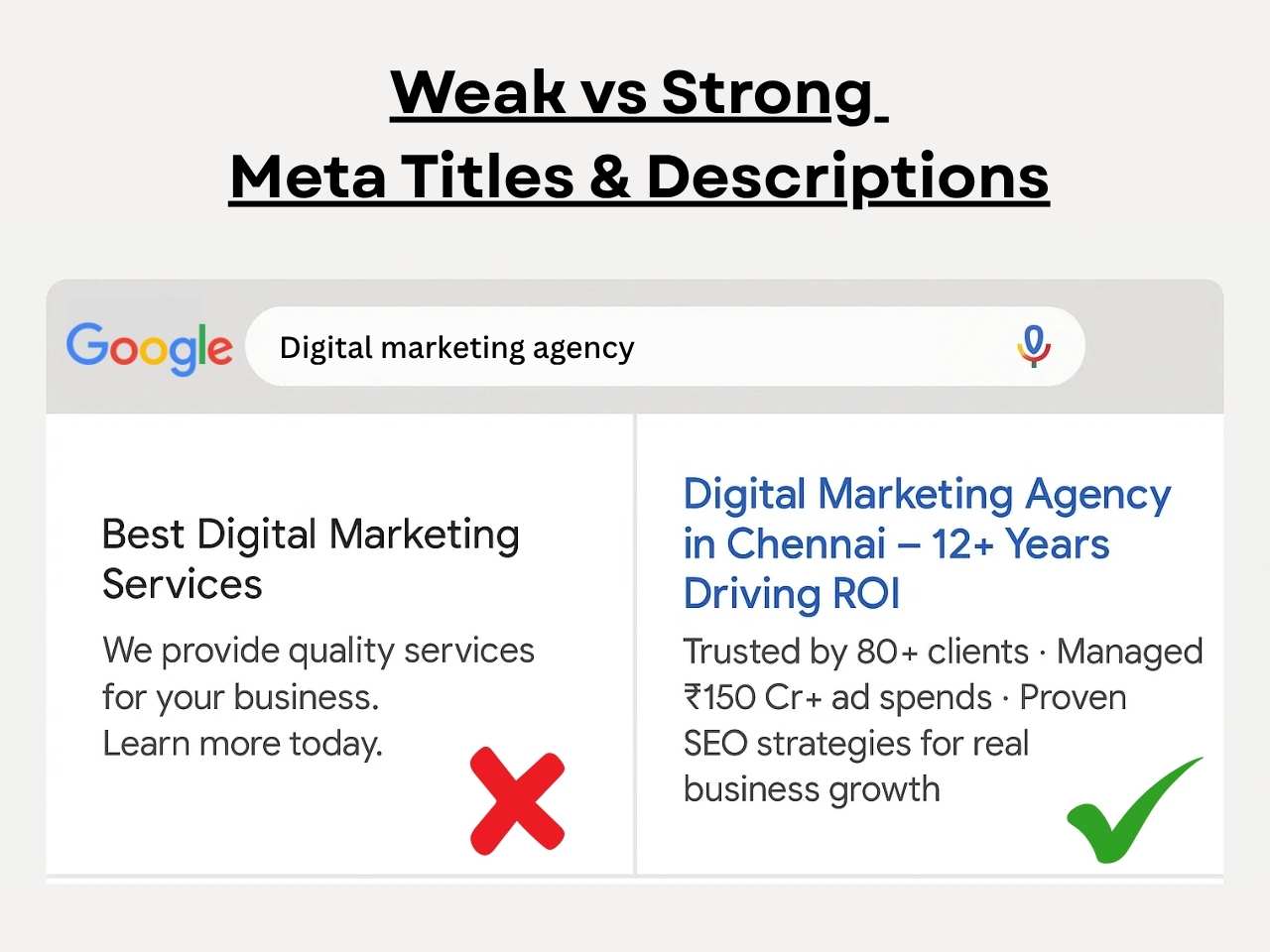
Why it’s costly: CTR (click-through rate) is one of the strongest multipliers in SEO. Even a small lift matters, a 2% improvement on a high-volume keyword can translate into hundreds of additional visitors and leads.
If your competitor’s title is sharper and intent-focused, they get the traffic, not you.
The solution: Treat your titles and descriptions like ad copy. Use the ideal title and meta description length guide to balance keywords with clarity and persuasion. Highlight your differentiator, align with search intent, and make them compelling enough to earn the click.
The problem: Without schema markup, your listing shows as plain text. Competitors get stars, FAQs, prices, or images that dominate attention.
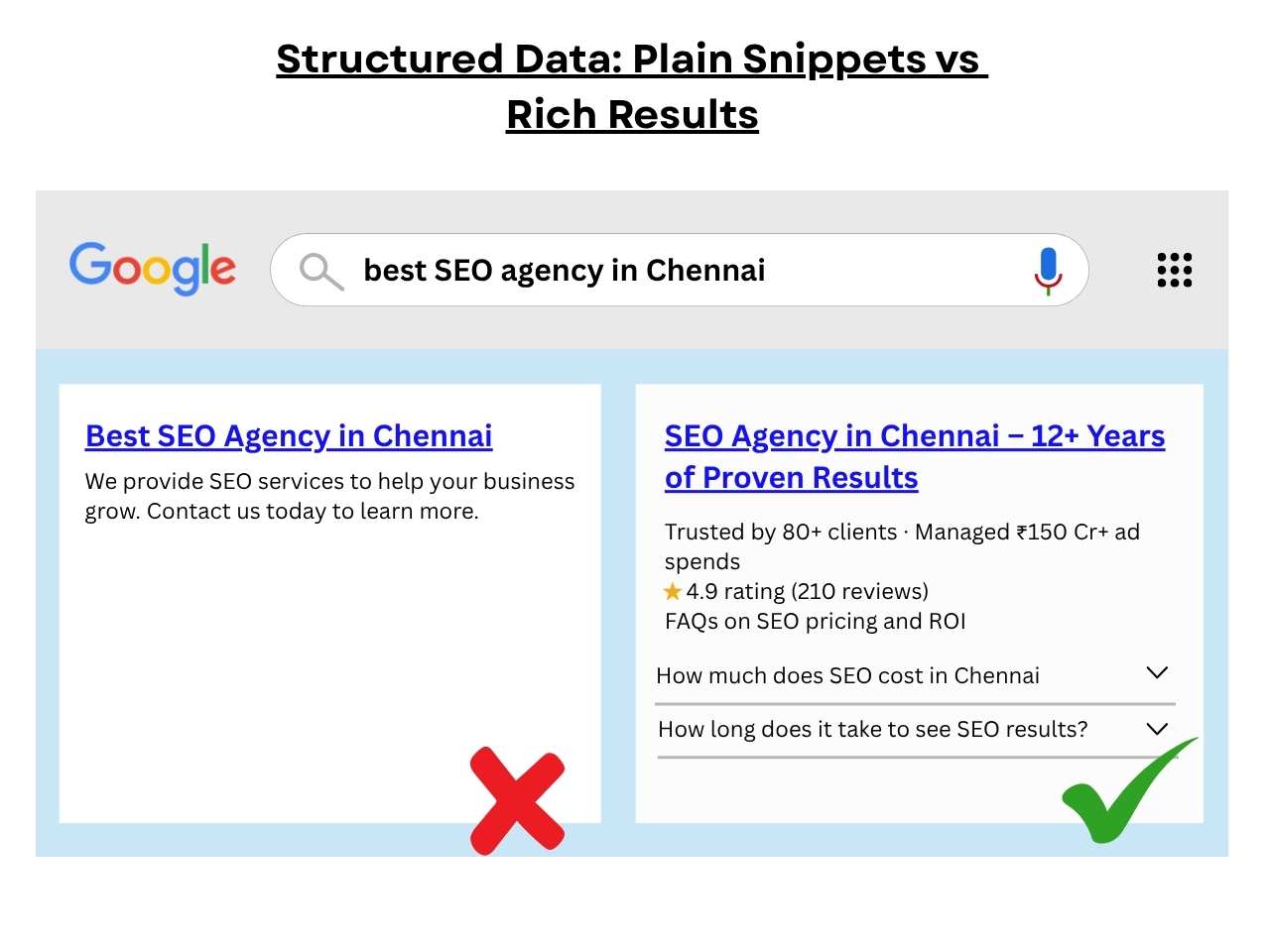
Why it’s costly: Structured data makes your site easier for Google to understand, crawl, and index correctly. That means higher relevance signals, better eligibility for featured snippets, and improved rankings over time.
On top of that, pages with rich results can see 30–80% higher CTR, giving your competitors a major advantage if you skip it.
The solution: Implement schema types aligned with your business (Product, LocalBusiness, Article, FAQ, Review). This ensures Google can interpret your content clearly and display enhanced results that attract more clicks. To know more, read our blog on Why Structured Data Still Matters in Google’s AI Search Era.
The problem: Many businesses with a physical presence treat local SEO as optional. They set up a Google Business Profile once and forget about it, or fail to build reviews consistently.
The result? Competitors dominate local search and capture nearby buyers.
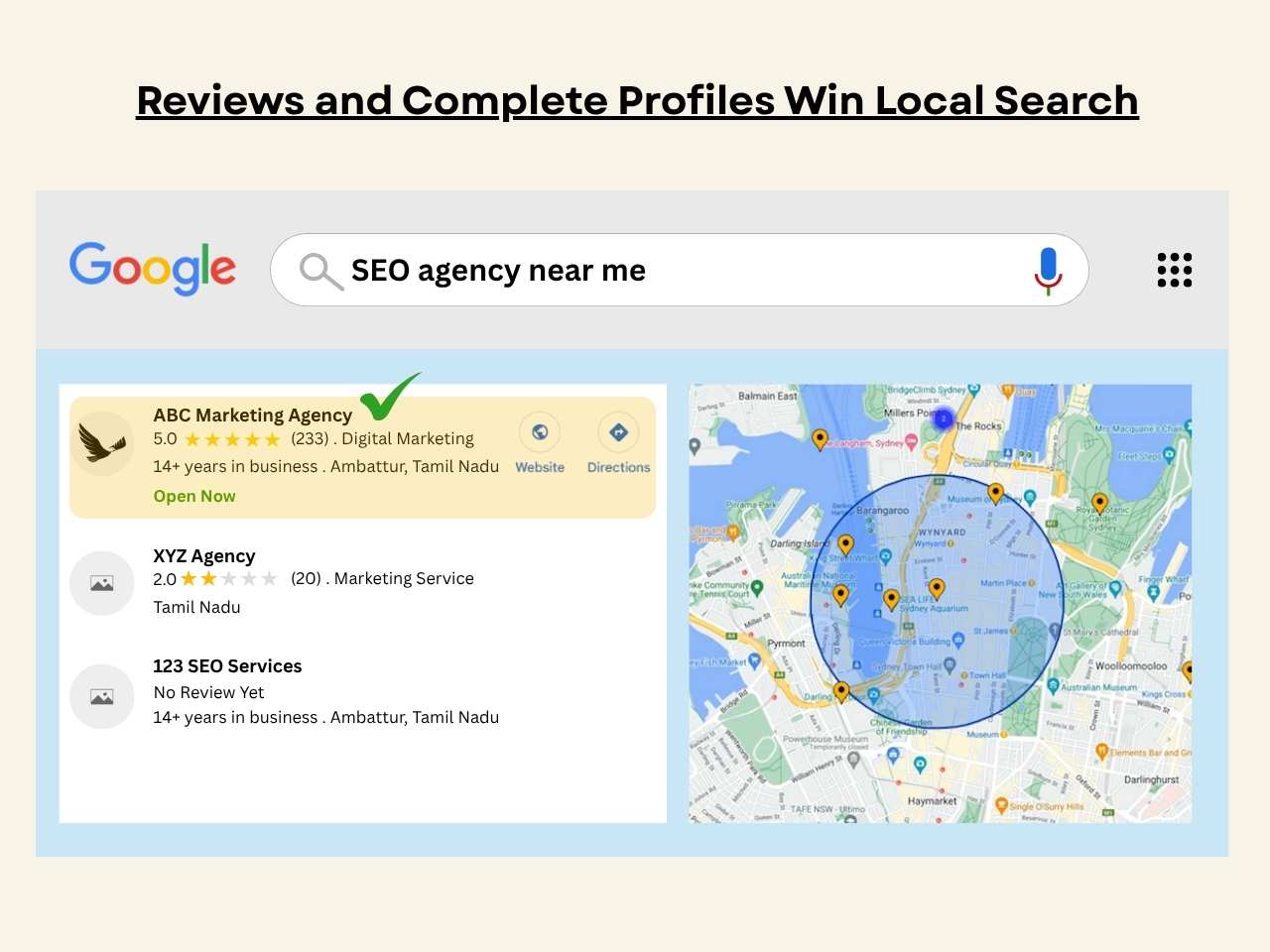
Why it’s costly: Local SEO is often the highest-converting traffic you can get. When someone searches “Top digital marketing agency in Chennai” or “SEO agency near me,” they’re ready to act.
If your profile is incomplete or your reviews are weak, you don’t just lose visibility, you lose trust. This also impacts your Domain Authority as a digital reputation score, which Google increasingly uses as a credibility signal.
Research shows 42% of consumers trust online reviews as much as personal recommendations, so a competitor with stronger reviews will almost always get the call.
The solution: Keep your local listings complete, accurate, and active. Update services, categories, and images regularly. Build a steady pipeline of genuine reviews, since both Google and real buyers use them as proof of credibility.
The problem: Your site might look fine to users, but if Google can’t crawl or index it properly, your most valuable pages may never show up in search.
Common culprits include duplicate content, broken internal links, messy URL parameters, or incorrect canonical tags.
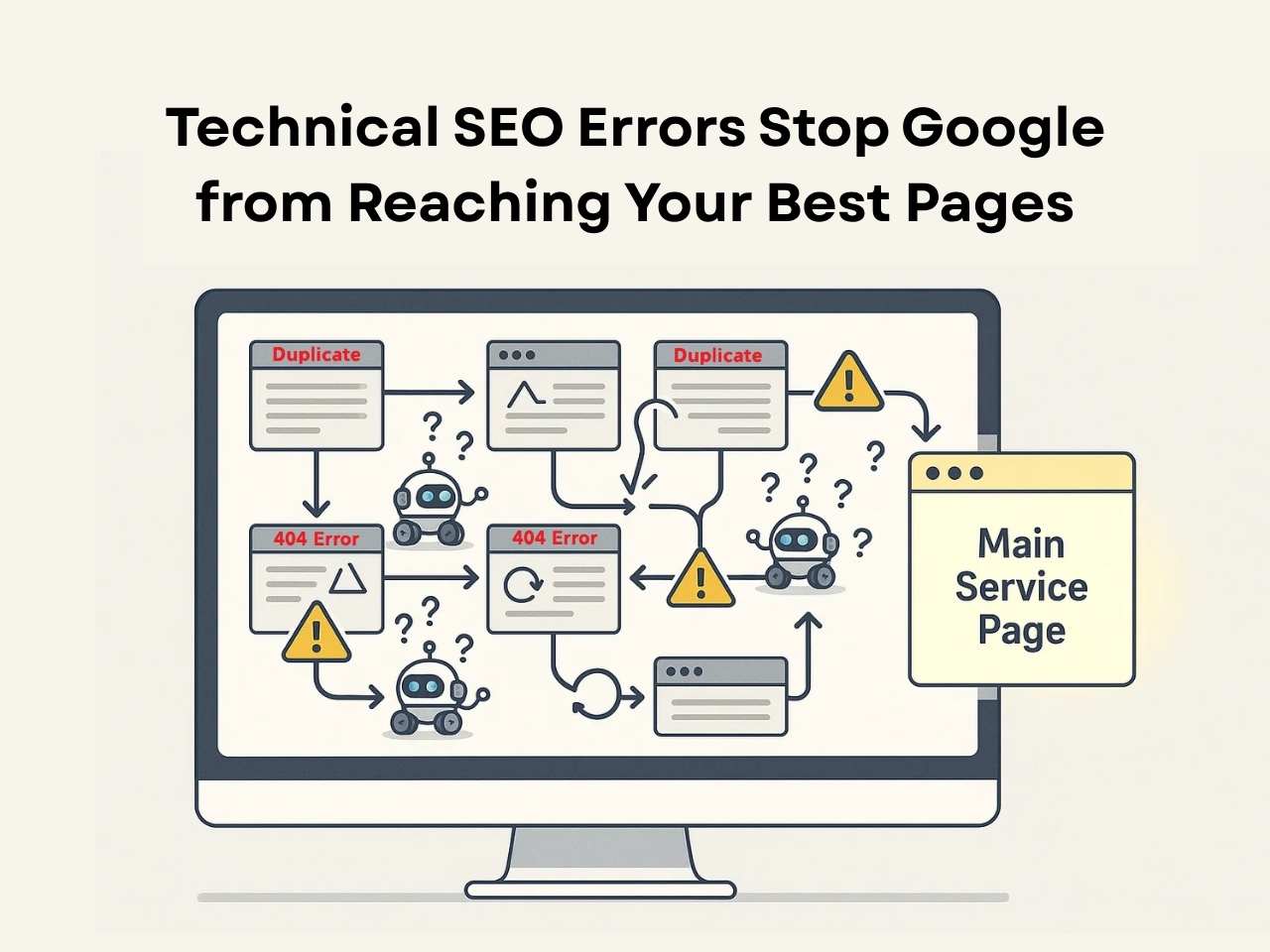
Why it’s costly: If search engines struggle to navigate your site, they either index the wrong pages or skip important ones altogether.
That means wasted content investments and lost rankings. Even worse, duplicate or conflicting signals can cause your own pages to compete against each other, weakening visibility across the board.
The solution: Regular technical SEO audits are non-negotiable. Clean sitemaps, consistent internal linking, proper canonicals, and error-free indexation ensure Google can easily understand and serve your best pages in results.
The problem: Too many businesses treat SEO success as “traffic is up” or “we got more impressions.”
But clicks don’t pay the bills. If you’re not tying SEO performance to leads, sales, or pipeline growth, you’re tracking activity, not results.
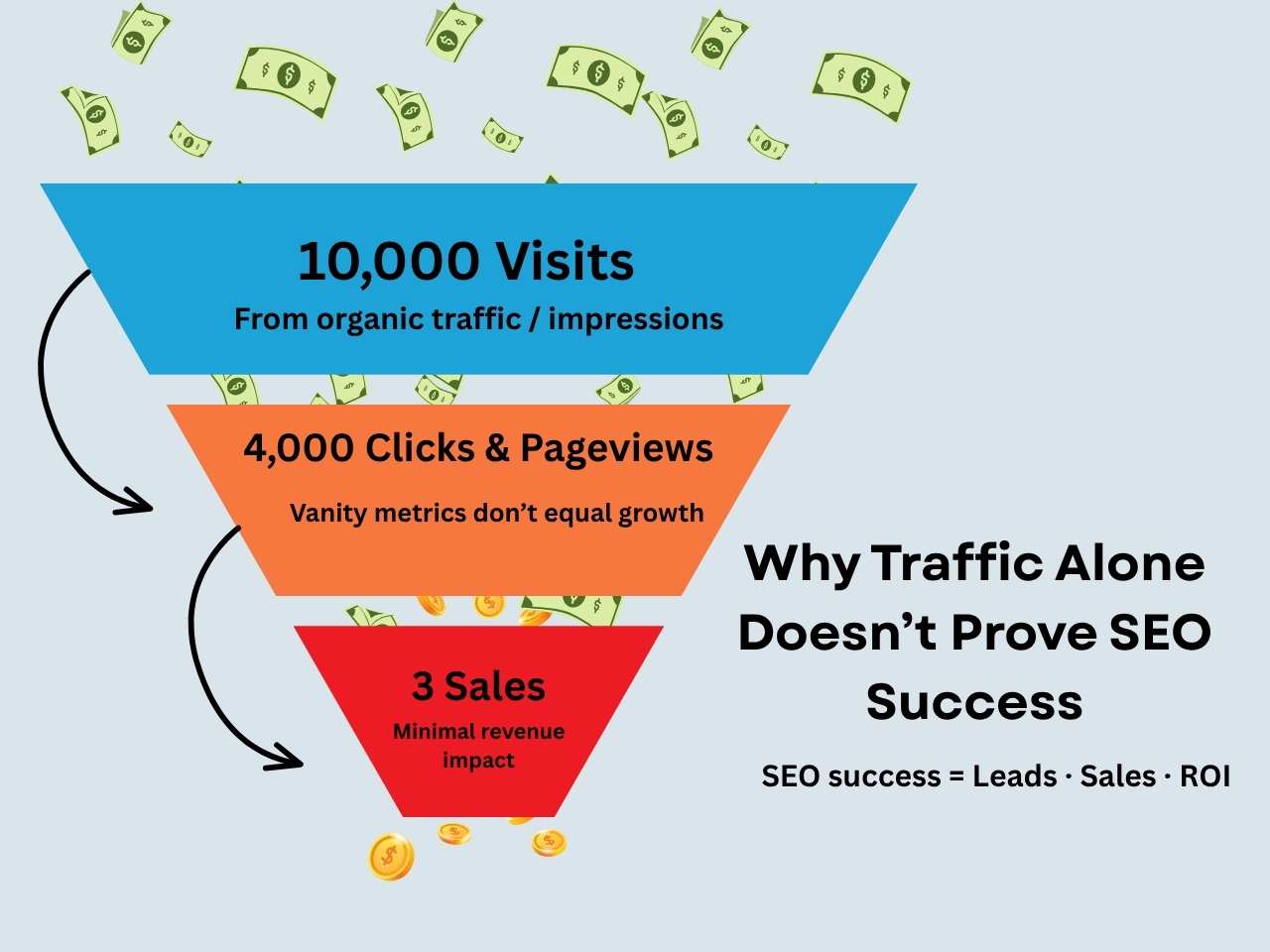
Why it’s costly: You could be pouring time and budget into keywords that bring visitors who never convert, while ignoring the ones that actually drive revenue.
Without clear ROI measurement, SEO looks like a cost center instead of a profit engine, making it harder to justify continued investment.
The solution: Go beyond vanity metrics. Connect organic traffic to outcomes like qualified leads, influenced revenue, and cost-per-acquisition savings compared to paid channels. A framework for this is explained in our blog on SEO rankings that turn into business revenue. When SEO is tied to bottom-line results, it shifts from being “just marketing” to being a growth driver.
SEO mistakes don’t just show up in rankings, they show up in your revenue:
The companies that win aren’t chasing shortcuts. They’re consistent about the basics: understanding what buyers want, publishing content that proves expertise, keeping their websites fast and functional, and tying every effort back to revenue.
If you feel like your SEO isn’t paying off, you’re not alone. The good news is, these mistakes can be fixed. Address them, and SEO stops being a cost line on your budget, it becomes one of your most powerful growth channels.